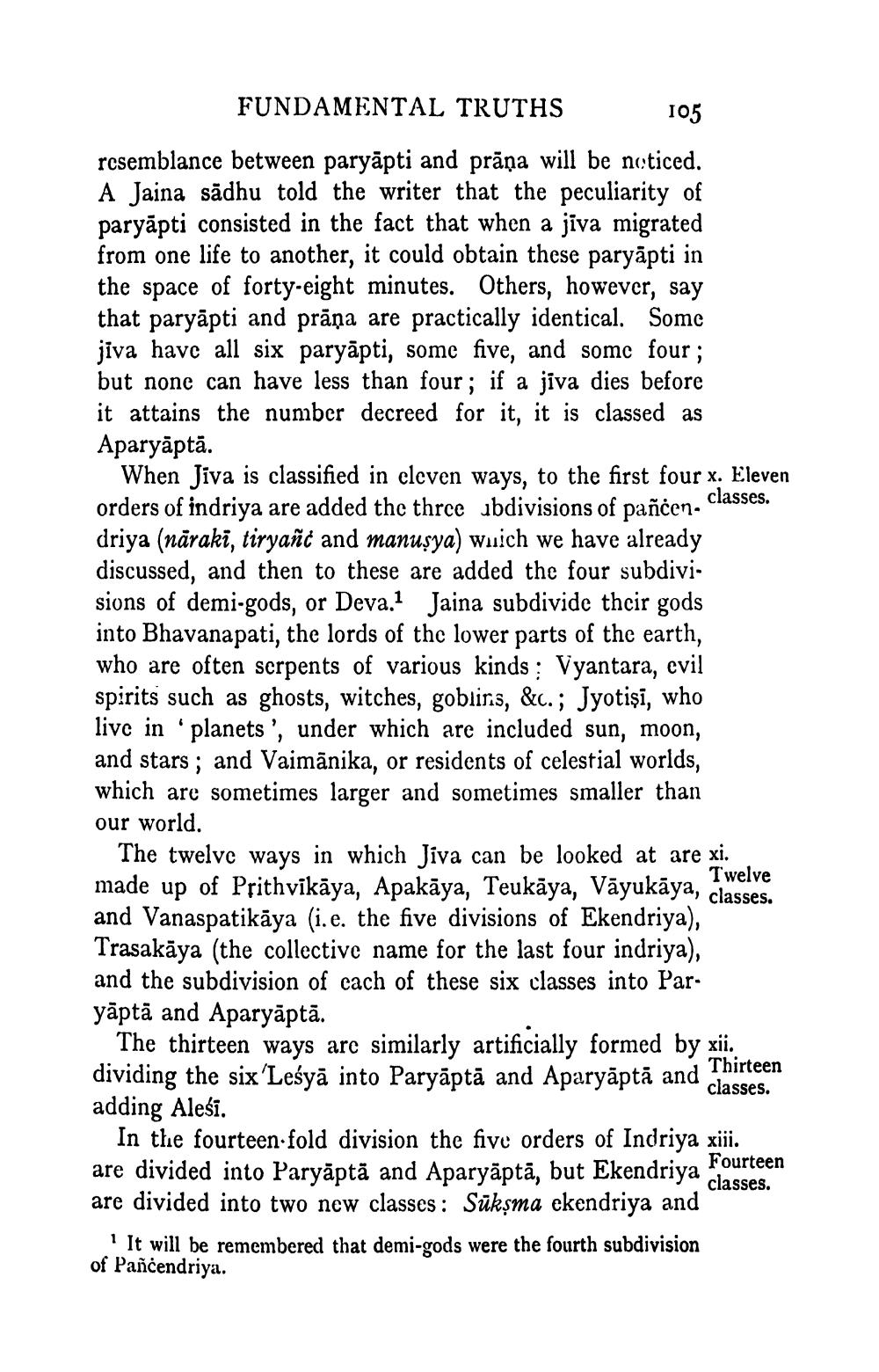________________
FUNDAMENTAL TRUTHS
105
resemblance between paryāpti and prāņa will be noticed. A Jaina sadhu told the writer that the peculiarity of paryapti consisted in the fact that when a jīva migrated from one life to another, it could obtain these paryāpti in the space of forty-eight minutes. Others, however, say that paryāpti and prāņa are practically identical. Some jīva have all six paryapti, some five, and some four; but none can have less than four; if a jīva dies before it attains the number decreed for it, it is classed as Aparyāptă.
classes.
When Jiva is classified in eleven ways, to the first four x. Eleven orders of indriya are added the three ubdivisions of pañcendriya (nāraki, tiryañć and manuṣya) which we have already discussed, and then to these are added the four subdivi sions of demi-gods, or Deva.1 Jaina subdivide their gods into Bhavanapati, the lords of the lower parts of the earth, who are often serpents of various kinds; Vyantara, evil spirits such as ghosts, witches, goblins, &c.; Jyotişi, who live in planets', under which are included sun, moon, and stars; and Vaimānika, or residents of celestial worlds, which are sometimes larger and sometimes smaller than our world.
Twelve
The twelve ways in which Jiva can be looked at are xi. made up of Prithvikaya, Apakāya, Teukāya, Vayukaya, classes. and Vanaspatikaya (i.e. the five divisions of Ekendriya), Trasakaya (the collective name for the last four indriya), and the subdivision of each of these six classes into Paryāptā and Aparyāptā.
Thirteen
The thirteen ways are similarly artificially formed by xii. dividing the six Leśyā into Paryāptā and Aparyāptā and classes. adding Aleśī.
In the fourteen-fold division the five orders of Indriya xiii. Fourteen are divided into Paryāptā and Aparyāptā, but Ekendriya classes. are divided into two new classes: Sukṣma ekendriya and
It will be remembered that demi-gods were the fourth subdivision of Pañcendriya.




